Littleredfootbigredheart
Well-Known Member
Hello there!
In this thread I’m going to include some information below on how I’d personally tackle an indoor starter set up for this guy until they’re bigger. Hopefully it helps give you some ideas!
I know it looks a lot to go over, I like to make sure all bases are covered, I’m happy to break down any information as and where needed, just ask!
Also please note, I’m not the most knowledgeable on these species specifically, but have a good idea on the basics of an effective starter set up.
If more knowledgeable members on these species want to add/change some of the advice, please do!
Care advice for these guys is painfully behind, fb pages, YouTube, pet stores, they’re all repeating the same outdated advice, this forum is made of people who have spent years finding the best ways to care for them that actually result in healthy tortoise, I’ve taken the knowledge of these lovely folks and applied it into making this thread.
Basking light should be an incandescent floodlight(examples attached) on a 12 hour timer.
Basking temperature directly under the floodlight should be 95-100f. The rest of the enclosure should be ranging 80-85(though I believe leopards like it a bit warmer)not dropping lower than 80 at night all over, you’ll likely need a CHE(ceramic heat emitter) to achieve this.
You may also wish to add ambient lighting on the same timer as the basking light, providing shady areas with hides and such.
If the floodlight isn’t enough to bump up the over enclosure temperature, you could add a CHE(ceramic heat emitter)or two depending on the size you go for, they’re a non light emitting heat bulb that people use to help make up ambient heat/ night heat. If dropping below the 80’s at night, a CHE is a good must.
Always run any ceramic bulbs on a thermostat, you’ll set the thermostat for around 80, plug the ceramic(s) into the thermostat and plug the thermostat into the mains, it’ll be on 24/7, but the thermostat will only turn on the ceramic(s) if the temperature drops below 80, and will keep them off if the temperature is fine.
Large wide domes(not deep) with ceramic fittings will help in projecting the heat down, just make sure to never solely rely on the clamp fittings that can come with them, they can fail, so it’s always best to hang them securely👍
Any indoor Uv should be a t5 fluorescent tube, avoid the compact and coil uv bulbs, they don’t give out enough uv and can hurt the tortoises eyes. The uv can be on a 4 hour timer from noon. I’ve attached the two brands to go for with examples on how to mount/hang them. The Arcadia prot5 kit 12% comes with the reflector fitting, the reptisun needs it buying separately.
With lighting always avoid anything labelled halogen or mercury vapour.
For substrates, either coco coir, dampened and packed down by hand as a base, with a layer of orchid bark or forest floor on top, or just the orchid bark/forest floor. Never use anything with sand mixed in, no top soils and no kinds of moss. The trouble with top soil is you don’t know what kind of plants have gone into it, they could be toxic. Sand and moss are impaction risks.
You want to aim to have the bottom layer of substrate damp, to do this pour lukewarm water into the corners, not loads but enough to dampen the entire bottom layer. To stop that top layer getting too dry/dusty, mix the substrate now n then, which also helps boosting humidity or give the top a spray. Check your monitors and substrate to do the pours as and when needed. I don’t recommend misters or foggers, they get the air too wet and cause respiratory problems.
Humidity for young growing tortoises benefits when maintained around 80%+ 24/7, you’ll find that difficult to achieve with an open top, even if from a naturally humid environment, it’s hard to maintain the humidity a hatchling needs indoors without a top. For the set up I’m recommending I’d get a greenhouse cover.
To maintain humidity whilst the tortoise is younger a greenhouse style set up works well and provides more space, the bigger you go the better, it’s ideal if you can build your own base to go as big as you can for the room you have.
If you can’t find an exact fit for your base with the cover, then place it over like the one with the white base in one of the photos, I’d put lining down under the base and cover though to stop condensate getting on your floor. Bear in mind the ones pictured I don’t think are personally big enough to house this tortoise, they’re just to give you an idea.
When making your base, just make sure the material is safe, some use flower beds or just make their own, for both these options I’d line with cheap pond liner to protect the base, making sure the liner goes up the sides too and make sure those sides are deep enough to prevent escapes.
Some people even hang their lighting from the greenhouse frame!(if it feels sturdy enough) Simply wrap the wire round so it’s at the height you need(check with temp gun/put thermostat in, 18-21 inches from top of the tortoises shell for uv I recommend) then secure with cable ties and chains.
I’ve also included examples of stands people make/buy.
I think for the size you’ll need to go, you may struggle to find a topper, in that case you could maybe throw some pvc covering over the stands if you can’t find one, but again if you do that, I’d put lining down under the base to stop condensate. Or perhaps even some sort of pollytunnle.
For a water dish a shallow terracotta saucer large enough for the tortoise to soak in, is considered safest, they have grip in the event your tortoise flips themselves, most pet store options are a known hazard.
Ignore whatever else is in these enclosures in the photos, they’re just to give you an idea, and again these particular ones look too small for the species imo to last long, but hopefully they help inspire an idea👍
I’d also always recommend getting your hands on a temp gun, they’re SO handy when setting up a new environment or for checking your monitors are correct🙂
Have digital monitors that measure both temp and humidity, the gauge ones are inaccurate.
As this is a closed chamber set up, I’d recommend letting the materials off gas for about a week or until there is no odour
For the diet side of things, avoid fruits, You want to stick with leafy greens, weeds and safe flowers for these guys, perhaps some of you will find this link below useful, maybe you could get some seeds offline and plant into organic soil(no fertilisers or chemicals) in a planter the tortoise doesn’t have access to, forage them as they grow😊be very wary foraging elsewhere, you can’t be sure there’s no chemicals and they’re toxic lookalikes so always double check.
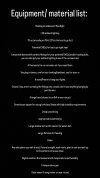
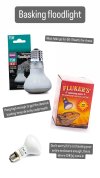

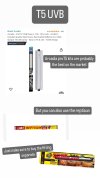
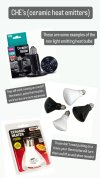
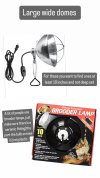

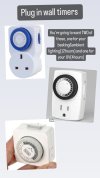
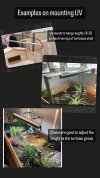
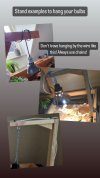
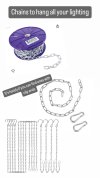

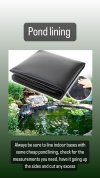

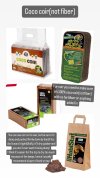
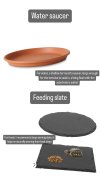
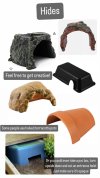




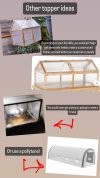


In this thread I’m going to include some information below on how I’d personally tackle an indoor starter set up for this guy until they’re bigger. Hopefully it helps give you some ideas!
I know it looks a lot to go over, I like to make sure all bases are covered, I’m happy to break down any information as and where needed, just ask!
Also please note, I’m not the most knowledgeable on these species specifically, but have a good idea on the basics of an effective starter set up.
If more knowledgeable members on these species want to add/change some of the advice, please do!
Care advice for these guys is painfully behind, fb pages, YouTube, pet stores, they’re all repeating the same outdated advice, this forum is made of people who have spent years finding the best ways to care for them that actually result in healthy tortoise, I’ve taken the knowledge of these lovely folks and applied it into making this thread.
Basking light should be an incandescent floodlight(examples attached) on a 12 hour timer.
Basking temperature directly under the floodlight should be 95-100f. The rest of the enclosure should be ranging 80-85(though I believe leopards like it a bit warmer)not dropping lower than 80 at night all over, you’ll likely need a CHE(ceramic heat emitter) to achieve this.
You may also wish to add ambient lighting on the same timer as the basking light, providing shady areas with hides and such.
If the floodlight isn’t enough to bump up the over enclosure temperature, you could add a CHE(ceramic heat emitter)or two depending on the size you go for, they’re a non light emitting heat bulb that people use to help make up ambient heat/ night heat. If dropping below the 80’s at night, a CHE is a good must.
Always run any ceramic bulbs on a thermostat, you’ll set the thermostat for around 80, plug the ceramic(s) into the thermostat and plug the thermostat into the mains, it’ll be on 24/7, but the thermostat will only turn on the ceramic(s) if the temperature drops below 80, and will keep them off if the temperature is fine.
Large wide domes(not deep) with ceramic fittings will help in projecting the heat down, just make sure to never solely rely on the clamp fittings that can come with them, they can fail, so it’s always best to hang them securely👍
Any indoor Uv should be a t5 fluorescent tube, avoid the compact and coil uv bulbs, they don’t give out enough uv and can hurt the tortoises eyes. The uv can be on a 4 hour timer from noon. I’ve attached the two brands to go for with examples on how to mount/hang them. The Arcadia prot5 kit 12% comes with the reflector fitting, the reptisun needs it buying separately.
With lighting always avoid anything labelled halogen or mercury vapour.
For substrates, either coco coir, dampened and packed down by hand as a base, with a layer of orchid bark or forest floor on top, or just the orchid bark/forest floor. Never use anything with sand mixed in, no top soils and no kinds of moss. The trouble with top soil is you don’t know what kind of plants have gone into it, they could be toxic. Sand and moss are impaction risks.
You want to aim to have the bottom layer of substrate damp, to do this pour lukewarm water into the corners, not loads but enough to dampen the entire bottom layer. To stop that top layer getting too dry/dusty, mix the substrate now n then, which also helps boosting humidity or give the top a spray. Check your monitors and substrate to do the pours as and when needed. I don’t recommend misters or foggers, they get the air too wet and cause respiratory problems.
Humidity for young growing tortoises benefits when maintained around 80%+ 24/7, you’ll find that difficult to achieve with an open top, even if from a naturally humid environment, it’s hard to maintain the humidity a hatchling needs indoors without a top. For the set up I’m recommending I’d get a greenhouse cover.
To maintain humidity whilst the tortoise is younger a greenhouse style set up works well and provides more space, the bigger you go the better, it’s ideal if you can build your own base to go as big as you can for the room you have.
If you can’t find an exact fit for your base with the cover, then place it over like the one with the white base in one of the photos, I’d put lining down under the base and cover though to stop condensate getting on your floor. Bear in mind the ones pictured I don’t think are personally big enough to house this tortoise, they’re just to give you an idea.
When making your base, just make sure the material is safe, some use flower beds or just make their own, for both these options I’d line with cheap pond liner to protect the base, making sure the liner goes up the sides too and make sure those sides are deep enough to prevent escapes.
Some people even hang their lighting from the greenhouse frame!(if it feels sturdy enough) Simply wrap the wire round so it’s at the height you need(check with temp gun/put thermostat in, 18-21 inches from top of the tortoises shell for uv I recommend) then secure with cable ties and chains.
I’ve also included examples of stands people make/buy.
I think for the size you’ll need to go, you may struggle to find a topper, in that case you could maybe throw some pvc covering over the stands if you can’t find one, but again if you do that, I’d put lining down under the base to stop condensate. Or perhaps even some sort of pollytunnle.
For a water dish a shallow terracotta saucer large enough for the tortoise to soak in, is considered safest, they have grip in the event your tortoise flips themselves, most pet store options are a known hazard.
Ignore whatever else is in these enclosures in the photos, they’re just to give you an idea, and again these particular ones look too small for the species imo to last long, but hopefully they help inspire an idea👍
I’d also always recommend getting your hands on a temp gun, they’re SO handy when setting up a new environment or for checking your monitors are correct🙂
Have digital monitors that measure both temp and humidity, the gauge ones are inaccurate.
As this is a closed chamber set up, I’d recommend letting the materials off gas for about a week or until there is no odour
For the diet side of things, avoid fruits, You want to stick with leafy greens, weeds and safe flowers for these guys, perhaps some of you will find this link below useful, maybe you could get some seeds offline and plant into organic soil(no fertilisers or chemicals) in a planter the tortoise doesn’t have access to, forage them as they grow😊be very wary foraging elsewhere, you can’t be sure there’s no chemicals and they’re toxic lookalikes so always double check.
The Tortoise Table - Home
The Tortoise Table plant database and resource site for Tortoise owners
www.thetortoisetable.org.uk























